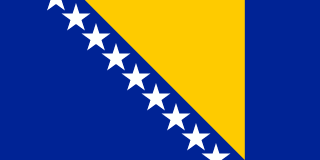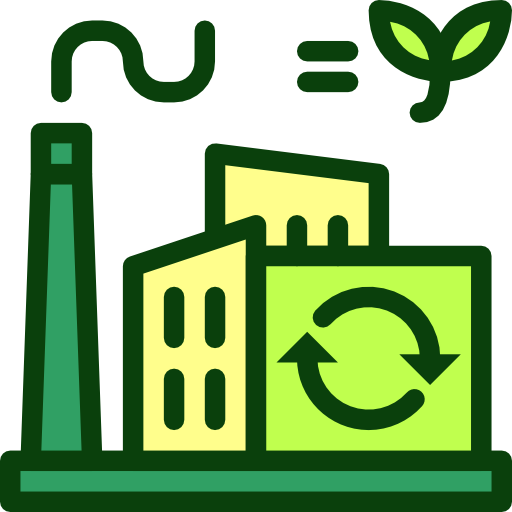Bosnia and Herzegovina - Geography

Here, let us take a look at the Geography of Bosnia and Herzegovina. Within Bosnia and Herzegovina's recognized borders, the country is divided into a joint Bosniak/Croat Federation (about 51% of the territory) and the Bosnian Serb-led Republika Srpska or RS (about 49% of the territory); the region called Herzegovina is contiguous to Croatia and Montenegro. Mother's mean age at first birth is 27.7 years (2019 est.) (), whereas, the Maternal mortality ratio is 6 deaths/100,000 live births (2023 est.)
Geographical data of Bosnia and Herzegovina
| Location | Southeastern Europe, bordering the Adriatic Sea and Croatia |
|---|---|
| Geographic coordinates | 44 00 N, 18 00 E |
| Map references | Europe |
| Tarrain | mountains and valleys |
| Natural Resources | coal, iron ore, antimony, bauxite, copper, lead, zinc, chromite, cobalt, manganese, nickel, clay, gypsum, salt, sand, timber, hydropower |
| Natural Hazards | destructive earthquakes |
| Irrigated Land | 30 sq km (2012) |
| Major rivers (by length in km) | |
| Major aquifers | |
| Land Boundaries | 1,543 km |
| Border Countries | Croatia 956 km; Montenegro 242 km; Serbia 345 km |
| Coastline | 20 km |
| Climate | hot summers and cold winters; areas of high elevation have short, cool summers and long, severe winters; mild, rainy winters along coast |
| Area | |
| Total Area | |
| Land Area | 51,187 sq km |
| Water Area | 10 sq km |
| comparative Area | slightly smaller than West Virginia |
| Maritime Claims | |
| Elevations | |
| Highest point | Maglic 2,386 m |
| Lowest point | Adriatic Sea 0 m |
| Mean elevation | 500 m |
| Land Use | |
| Agricultural land | 21.7% (2023 est.) |
| Agricultural land: arable land | arable land: 7.2% (2023 est.) |
| Agricultural land: permanent crops | permanent crops: 1.4% (2023 est.) |
| Agricultural land: permanent pasture | permanent pasture: 12.8% (2023 est.) |
| Forest | 42.2% (2023 est.) |
| Other | 36.1% (2023 est.) |
Population Distribution
The northern and central areas of the country are the most densely populated
People and Society
In Bosnia and Herzegovina, the different Ethnic groups are such that we have: Bosniak 50.1%, Serb 30.8%, Croat 15.4%, other 2.7%, not declared/no answer 1% (2013 est.)
| Population | |
|---|---|
| Pop growth rate | -0.25% (2024 est.) |
| Birth rate | 8.2 births/1,000 population (2024 est.) |
| Death rate | 10.3 deaths/1,000 population (2024 est.) |
| Health expenditure | |
| Physicians Density | |
| Hospital bed Density | 2.3 beds/1,000 population (2019 est.) |
| Total fertility rate | 1.38 children born/woman (2024 est.) |
| Gross reproduction rate | 0.67 (2024 est.) |
| Contraceptive prevalence rate | |
| Est married women (ages 15-49) | 63.8% (2023 est.) |
| Literacy | |
| Education expenditures | |
| Net Migration rate | -0.4 migrant(s)/1,000 population (2024 est.) |
| Nationality | Bosnian, Herzegovinian | Bosnian(s), Herzegovinian(s) |
| Languages | |
| Religions | Muslim 50.7%, Orthodox 30.7%, Roman Catholic 15.2%, atheist 0.8%, agnostic 0.3%, other 1.2%, undeclared/no answer 1.1% (2013 est.) |
| Age Structure | |
| 0-14 years | 13.1% (male 257,444/female 240,209) |
| 15-64 years | 68.3% (male 1,305,271/female 1,290,920) |
| 65 years and over | 18.6% (2024 est.) (male 289,449/female 415,378) |
| Dependency Ratios | |
| Total dependency ratio | 43.5 (2024 est.) |
| Youth dependency ratio | 16.8 (2024 est.) |
| Elderly dependency ratio | 26.7 (2024 est.) |
| Potential support ratio | 3.7 (2024 est.) |
| Median Age | |
| Total | 44.8 years (2024 est.) |
| Male | 43.1 years |
| Female | 46.5 years |
| Urbanization | |
| Urban population | 50.3% of total population (2023) |
| Rate of urbanization | 0.61% annual rate of change (2020-25 est.) |
| Major urban areas (Pop) | 346,000 SARAJEVO (capital) (2023). |
| Sex Ratio | |
| At birth | 1.07 male(s)/female |
| 0-14 years | 1.07 male(s)/female |
| 15-64 years | 1.01 male(s)/female |
| 65 years and over | 0.7 male(s)/female |
| Total population | 0.95 male(s)/female (2024 est.) |
| Infant Motality | |
| Total | 5 deaths/1,000 live births (2024 est.) |
| Male | 5.1 deaths/1,000 live births |
| Female | 4.9 deaths/1,000 live births |
| Life Expectancy at birth | |
| Total population | 78.5 years (2024 est.) |
| Male | 75.5 years |
| Female | 81.6 years |
| Drinking Water Sources | |
| Improved: urban | urban: 94.8% of population (2022 est.) |
| Improved: rural | rural: 97.3% of population (2022 est.) |
| Improved: total | total: 96.1% of population (2022 est.) |
| Unimproved: urban | urban: 5.2% of population (2022 est.) |
| Unimproved: rural | rural: 2.7% of population (2022 est.) |
| Unimproved: total | total: 3.9% of population (2022 est.) |
| Sanitation facility acess | |
| Improved: urban | urban: 99.5% of population (2022 est.) |
| Unimproved: urban | urban: 0.5% of population (2022 est.) |
| Alcohol consumption per capita | |
| Total | 5.46 liters of pure alcohol (2019 est.) |
| Beer | 4.19 liters of pure alcohol (2019 est.) |
| Wine | 0.47 liters of pure alcohol (2019 est.) |
| Spirits | 0.62 liters of pure alcohol (2019 est.) |
| Other alcohols | 0.17 liters of pure alcohol (2019 est.) |
| Tobacco use | |
| Total | 34% (2025 est.) |
| Male | 39.2% (2025 est.) |
| Female | 29% (2025 est.) |
Demographic profile
All Important Facts about Bosnia and Herzegovina
Want to know more about Bosnia and Herzegovina? Check all different factbooks for Bosnia and Herzegovina below.
-
 Bosnia and Herzegovina Factbook
Bosnia and Herzegovina Factbook
-
 The Economy of Bosnia and Herzegovina
The Economy of Bosnia and Herzegovina
-
 Learn about the Government of Bosnia and Herzegovina
Learn about the Government of Bosnia and Herzegovina
-
 Communication in Bosnia and Herzegovina
Communication in Bosnia and Herzegovina
-
 Popular Universities in Bosnia and Herzegovina
Popular Universities in Bosnia and Herzegovina
-
 Enerny in Bosnia and Herzegovina
Enerny in Bosnia and Herzegovina
-
 Transport in Bosnia and Herzegovina
Transport in Bosnia and Herzegovina
-
 The Geography and society of Bosnia and Herzegovina
The Geography and society of Bosnia and Herzegovina
-
 The Environment of Bosnia and Herzegovina
The Environment of Bosnia and Herzegovina
-
 Military and security in Bosnia and Herzegovina
Military and security in Bosnia and Herzegovina